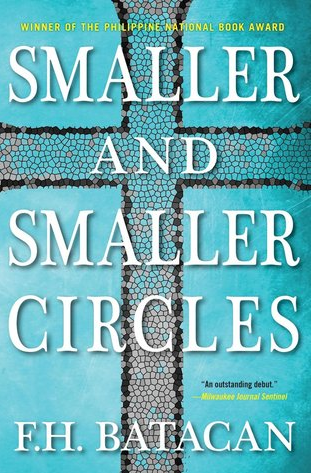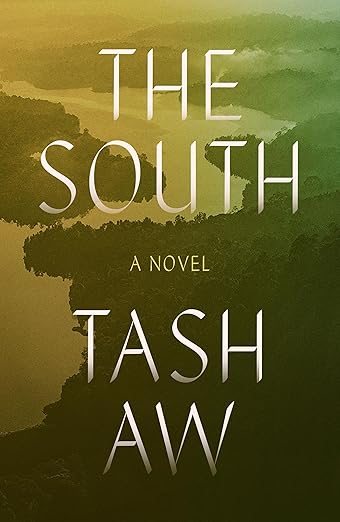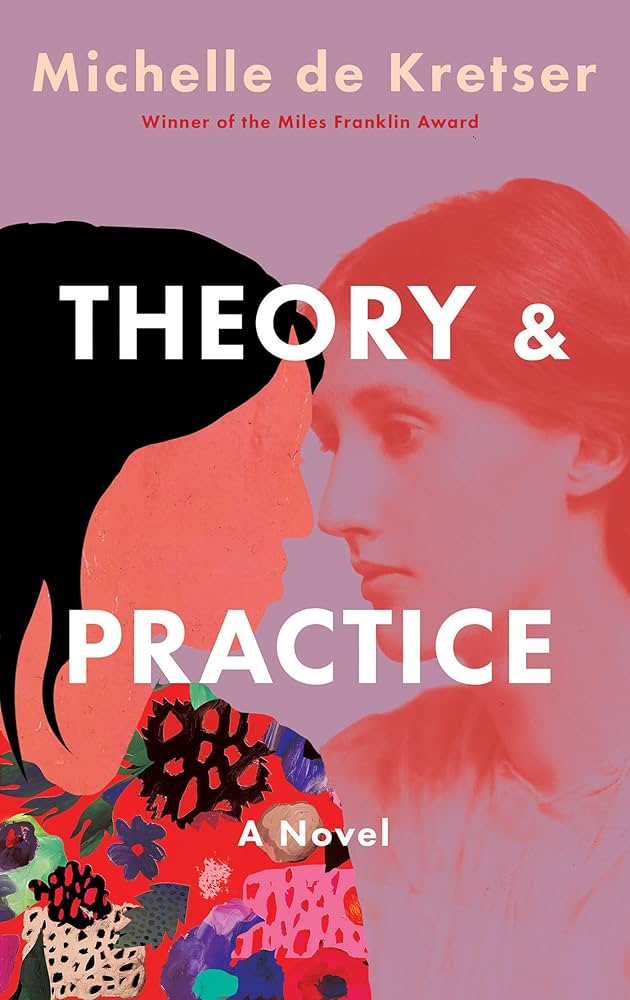Reviewed by

The last time I visited Manila, in April 2013, I tripped over a body in the street. It was 1 a.m. It was a boy sleeping on a piece of cardboard. He rubbed his eyes, picked up the cardboard, and walked into the night. Reading Smaller and Smaller Circles by F.H. Batacan took me into the hot, dark nights of Manila during the rainy season. It’s 1997, a decade after the People Power Revolution that toppled the Marcos regime. And still, boys turn up dead every month in the communities around the massive Payatas garbage dump near Quezon City. The bodies all show signs of ritualistic killings, in which the faces of the boys have been obliterated by the killer. But Filipino culture denies the existence of serial killers. Filipinos are too warm and friendly for such monsters to emerge in their midst. And with the generations living together, no one is ever alone.
A sleuthing Jesuit priest and forensic anthropologist, Father Gus Saenz, and his protégé, Father Jerome Lucero, a clinical psychologist, have worked together in the past to identify victims of the Marcos dictatorship and provide solace and counseling to the surviving families. The elderly Director of the National Bureau of Investigation (NBI) wants Fr. Saenz to use his rare skills to stop the ritualistic killings. In contrast to the corrupt local police, who use false confessions, cover-ups, and shoddy investigative techniques, the crimestoppers in Jesuit collars are principaled and methodical.
Saenz’s rudimentary laboratory is funded by Japanese business people who are, like most of the Philippines, heavily under the influence of Catholic Church leaders. But Saenz’s forensic examinations of the murdered boys of Payatas and Lucero’s psychological studies of sexual violence in the Philippines combine to paint a portrait of a serial killer. Using psychological profiling, Saenz and Lucero discover that the killer may have a monthly timetable to select victims.
Racing against the monthly deadline to avoid another murder, they are hampered by a nervous Cardinal who controls the Jesuit order and influences police brass. Saenz, who has spent a decade railing against a priest accused of molesting boys, is on the enemies list of the Cardinal, who protects the molester. The greedy, ambitious district attorney, meanwhile, diverts the search for the real killer by finding a man to make a false confession.
The Payatas dumpsite is a sprawling, 50-acre landfill, governed by its own rules. Batacan does not flinch in describing its stench and heat of such a place:
The stench from the sea of garbage around them is overpowering. It rained last night, and now that the sun is out, the dump site is steaming. Awful vapors rising lazily with the heat: wet paper and rot and excrement mixing in a soup of odors around them, above them.
Her prose is sharp and terse, befitting the crime procedural genre. The third person, present-tense narration is broken up with the killer’s short, first-person monologues, adding to the sense of impending doom. The reader’s heart gets broken with each murder.
Batacan’s novel, winner of the Philippine National Book Award and the Palanca Memorial Award, aims higher and wider than a typical whodunit. It takes on the Church, poverty, the country’s infrastructure problems, cronyism, and misogyny.
The killing of children in any society is horrifying, but the Philippines, as a society, places emphasis on large families. The hardscrabble families of the dumpsite are losing the only thing they have of value—their children.
Father Gus Saenz and Lucero have a Holmes-Watson relationship, the older man of hard sciences working and clashing with the younger psychologist, who explores the depths of the criminal mind. They have a long history together as student and teacher, and there are scenes where they concur and others where they clash.
When we first meet Saenz, he is slicing up a corpse while listening to R.E.M. on his stereo. Lucero makes a snide remark about the music: “You’re too old for this.”
Saenz says: “Don’t knock it. It’s the closest either of us will get to sex.” Fans of Chandler-esque detectives might wonder if they will miss the musky sex appeal dimension with a goody-two-shoes priest detective. Fear not. Batacan has included, Joanna Bonifacio, a television crime reporter, who has guts, brains, toughness, and sex appeal. After Saenz appears as a guest on her network, Bonifacio, who has her eye on the corrupt NBI, interrupts a night with her paramour to explore the dump.
The Philippines is the most Catholic country in Asia. In taking on the church, Batacan deserves credit for a gutsiness that might not be apparent to Western readers. The pedophile scandal is woven into the plot and rhythm of the narrative. The scene featuring Saenz and Lucero dueling with the Cardinal at the Imelda-built Cultural Center of the Philippines is a piercing look at how the Church influences everything in the country. In one of the most striking reversals of fortune, the Cardinal betrays Father Saenz by using his influence to defund the forensics lab.
Batacan’s use of language is melodic when it needs to be and dagger sharp when the moments build in tension. The 300+ pages move fast. The Jesuits close in on the killer by looking at patterns which the NBI has overlooked in records of government care of the children of the slums, which yields important clues to who may have had access to the murdered boys.
Saenz goes after the killer mano-a-mano, taking his lumps to slow the maniac down in a bloody mobile exam room. The backstory of the killer’s motivation and how the victims were selected is chilling. The realization of how poverty makes the most vulnerable in a society invisible is a major accomplishment of this book.
If you miss Father Saenz, as I did after reading this novel, he makes an appearance inComforter of the Afflicted part of Manila Noir edited by Jessica Hagedorn, from Akashic’s Noir City series.
A note about the Payatas dumpsite. In 2000, more than 300 people were killed when a mountain of garbage collapsed and destroyed a shanty town. Since, a remarkable change has happened. A private operator, The Payatas Alliance Recycling Exchange, remade the dump into a waste-management facility that employs 3,000 people. The practice of child labor has been banned, and incidents of gang violence eliminated now that the work force is organized. Scavengers have been integrated into a respected work force at a recycling plant, the first in Asia to meet the protocols of the Kyoto accord.
Kristabelle Munson was born in Manila. Kristabelle is a VONA/Voices alum and a resident at PowderKeg. She holds a Master of Science from Columbia University and an MFA in fiction from Stonecoast in Maine.



